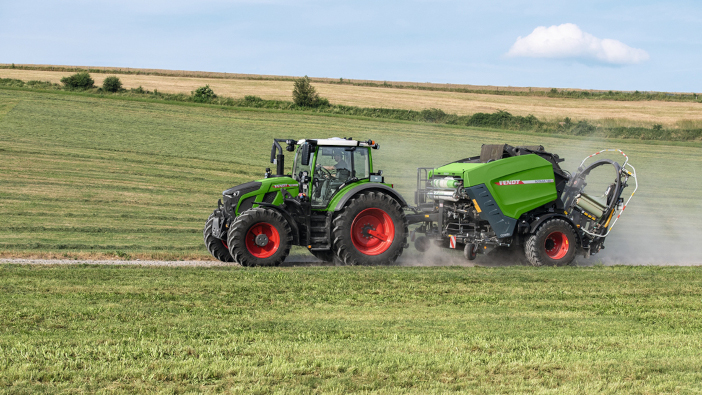Fendt has announced that the Rotana 160 V Combi baler-wrapper is now available with film binding and a host of other features, said to produce up to 30 more bales per day and save up to 3m of film per bale.
Ed Dennett explained: “Film binding is already available for the fixed-chamber, baler-wrapper combi machines. To offer variable chamber baler operators the same advantages, this technology has been transferred to variable chamber models of the Rotana.”
Using film instead of netwrap reduces the air between the bale and the wrapping film, reducing feed losses caused by mould and protecting the bale in freezing temperatures.
“Two gathering arms and a shaft binding system specially developed for the variable presses, guide the binding material into the baler chamber. The shaft formation also protects the film from damage. An electro-magnetic brake controls the pre-stretching of the net or film according to the binder and its roll diameter,” said Ed.

Additional benefits include easier disposal of waste, as there is only one material used. Film is also typically less contaminated and easier to recycle. Fendt further states that the equivalent usage when compared to netwrap is 3m less.
For contractors or farms producing silage, hay and straw, it is possible to quickly change between film and net, with a choice of roll loading systems, including the Eco Load and Comfort Load.
“Machines with Eco Load have a simple loading chute that requires a little more muscle power. With Comfort Load, the operator places the roll in a padded carriage, lifts it and guides it up to the quick-change system. A further benefit is that rolls can be loaded from the ground,” Ed explained.
The new model also benefits from a Speed tailgate, capable of baling up to 30 more bales per day compared to the previous model. Folding, self-steering pickup wheels can also be specified, which can be locked to make reversing easier.
The automated dry mass control is another useful feature, according to the company, with which operators can select the level of dry matter each bale should contain. Two sensors then monitor the bale chamber to record the moisture and mass of the bale.
For more information go to www.fendt.co.uk



